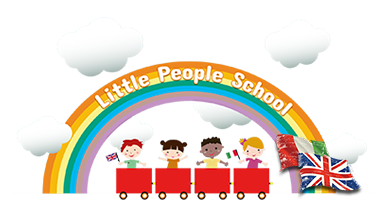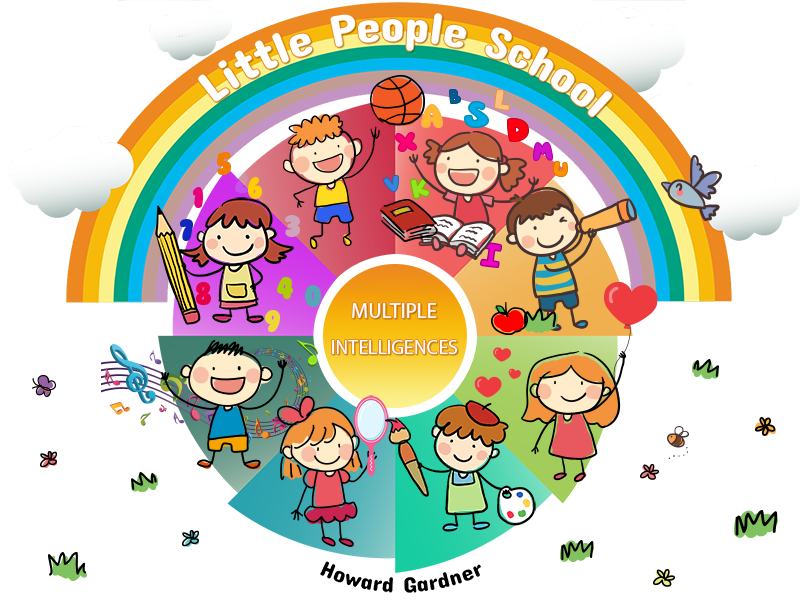It was thought till the 80’s that a single type of intelligence existed and that its level was fixed since birth and for our hole life; the so called IQ or intelligence quotient, which was measured with appropriate structured tests which mostly registered a single persons level of mathematical – logical and linguistic skills.
But in 1983 Howard Gardner a pedagogy professor from Harward published a revolutionary text, Frames of Mind, The theory of Multiple Intelligences (Formae Mentis).
Essay on the multiplicity of intelligences (linguistic, logical mathematical, interpersonal, intrapersonal, bodily kinesthetic, musical, visual-spacial) which are considered to be biological potentials existing all since birth and empirically observable (such as behaviors, tendencies and expressed abilities). In half of the 90’s Gardner supposes the existence of two new intelligences, the naturalistic and the existencial one, without excluding the fact that there will be more to be discovered.
This theory considers all the various skills we possess, not just the “academic” ones. Every type of intelligence is considered to be a sort of talent which every human being uses as a tool to know himself and the world itself.
These intelligences are never isolated, (Gardner describes them as semi-autonomous devices that process information) but they interact to each other in complex ways.
In each human being those intelligences present indeed a different combination of levels of development which means that every intellectual profile is unique therefore different.
Where there is no specific pathology abridging the human activity of the brain we can state that we are all intelligent but in different ways.
Each one of us own in different levels, all the intelligences. Gardner undertakes the theory that it’s impossible that in a able-bodied person even one type of intelligence is missing, which helps overtake the fact that the same individuals are hopeless in some subject.
Every child for example possesses music abilities, but some will become composers, some singers or musicians and all the others, the majority will simply just happily listen to music or dance.
Every child can become sufficiently competent in every intelligence, if properly stimulated.
Gardner states that the improvement and the achievement of high levels in each intelligence is determined by genetic factors, but also depends from the learning opportunities that a child is given in a certain cultural contest.
It’s not sufficient to identify the personal inclination of an individual, it’s necessary to train them and unhand them, otherwise they will remain to their embryonic state.
Since the theory of multiple intelligences states that we are not bound to the intelligence profile which we are born with, once found the strong points of the child, we can help him use them to his advantages; instead working on his weaknesses we can help him improve them.
The school has the multiple goal to discover, unhand, compensate and stimulate every single intelligence, giving the child the chance to achieve success giving rise to other intelligences that are considered “less noble”.
Since biological factors certainly have their influence, it would be not possible to develop all the intelligences in the same way for everyone, not even bring them to an excellent level if the genetic requirements are missing.
The theory of the multiple intelligences assumes:
- A new vision for the child “to educate” who is not only someone whom you transfer information to, but a multi dimension being, active and “protagonist” of the approach to learning, because the intelligences give him the capacity to operate and get to know the reality through different interpretative codes.
- a new vision of the teacher, which has to be able to read the different abilities of the children (as Gardner says: we are not all the same, we don’t have the same type of mind) each with the same value; who can deal with the single argument using different ways (ex: conversations, visual activities, practical simulations, games and riddles, creative movements, singing…), which would favor the direct experience of the children in relation to the acquisition of the knowledge; who operates in flexible time and spaces.
To finish here is a short description of the different types of intelligences:
- LINGUISTIC: which is the inclination to listening and speaking. In other words, the capacity to quickly learn new terms, to use language in a creative way and to show interest in word games.
- MUSICAL: which is shown by the propension and sensibility to the world of sounds (tone variations, timbre, reproduction and invention of rhythmic structures), the musicality and to the individual and coral singing.
- LOGICAL /MATHEMATICAL: which is manifested in the ability of quantification, calculation, logic, of generalization of the rules, applying them in different contests, problem solving, to get connections between things which leads to the abstract way of thinking.
- VISUAL/SPACIAL: that is the sensibility to the world of art, shapes, colors and the ability of artistic rielaboration of the reality or emotional states (plastic and grafic reproduction), it is also the ability of the orientation in space and to find and collocate objects towards their benchmark. This intelligence is also functional for the development of the ability to write and read.
- BODILY KINESTHETIC: which enables the control of the body, the coordination of movements, on expressive mimic and gestures, the ability of free and guided movements, static and dynamic balance, fine motor skills, eye-manual coordination.
- INTRAPERSONAL: the capacity to comprehend and handle are own emotions, (expressing them also with alternative language rather then the verbal one) and the situation that determined them, to behave autonomously (as to attend the every day necessities, hygiene and nutrition to be able to operate choices regarding are own tastes and wishes, rather than be conditioned by imitative factors), to get to know our strengths and weaknesses, to accomplish every task with no need of other help or solicitations).
- INTERPERSONAL: which implies the ability to comprehend needs, intentions and motivations of others, developing emphatic relationships, and also the capacity of being a leader, a mediator of conflicts and an organizer. The child that shines in this field is a friendly child, who interacts spontaneously with adults and his peers, who participates to games and group activities with enthusiasm, and tries to involve others in his own initiatives.
- EXISTENTIAL: which is knowing about how to reflect on “philosophical” themes (for ex. the meaning of life, of death, values and justice) and to give personal answers ti the different ———
- NATURALISTIC: which involves the interest for plants, animals and natural phenomenas like the incoming of the seasons, a multi sensorial approach to reality, a sperimental attitude.




